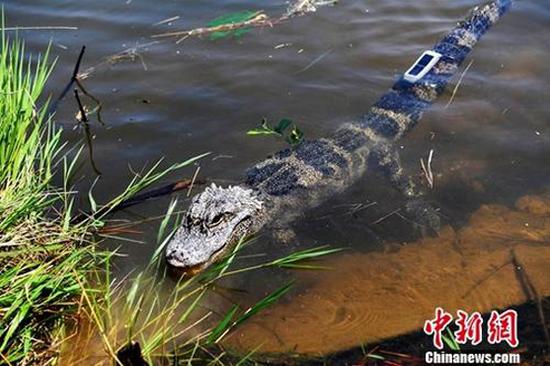More than 8,000 Yangtze alligators in the Chinese city of Xuancheng will be moved indoors ahead of the winter season.
The Anhui Chinese Alligator National Nature Reserve, the world’s largest breeding and research centre for the species, will be sheltering the alligators to help them through the cold winter months.
Yangtze alligators, also known as Chinese alligators, are native to the rich wetlands along the mid and downstream of the Yangtze River. This ancient and fragile animal is among the rarest reptiles in the world. With a wild population of less than 200, it is listed as “critically endangered” by the IUCN Red List of Threatened Species. It is also under national first-class protection under Chinese law.

It is the only member of the eight species in the Alligatoridae family to exist outside of the Americas. Chinese alligators can live up to 70 years in human care, and can reproduce into their 50s.
In historical times, the Chinese alligator was found in the extensive lakes and marshlands of the middle-lower Yangtze River region and along the river from Shanghai to Jianling City in the Hubei Province. Today it is limited to the lower Yangtze, primarily in the Anhui and Zhejiang provinces in eastern China. Marshlands, ponds, lakes, reservoirs, river backwater canals, rice paddies and irrigation networks provide suitable habitat. It is native to slow-moving freshwater areas of the lower Yangtze River in China where it eats snails, crustaceans, insects, fish, young waterfowl and rodents.
The Chinese alligator differs from its American counterpart in subtle ways. It’s smaller, the head is more robust and its snout is slightly upturned. The eyelids of the Chinese alligator have a bony plate that is missing in the American alligator. The American alligator also lacks the bony belly plates, or osteoderms, of the Chinese alligator. Chinese alligators usually grow to about 1.5 meters. The largest Chinese alligator measured in recent times was about half the size of the largest living American alligators. Some may weigh up to 38.5 kilograms; however, most weigh less than 23 kilograms.
The species digs extensive earthen tunnels with multiple chambers, entrances and pools. Largely nocturnal because of human persecution, they stay in their tunnels much of the day when humans are in the vicinity as well as during cool weather and winter months.
The Yangtze or Yangzi is the longest river in Asia, the third-longest in the world and the longest in the world to flow entirely within one country. It rises at Jari Hill in the Tanggula Mountains and flows 6,300 km in a generally easterly direction to the East China Sea.
SOURCES:
- South China Morning Post, 16 Nov 2021 https://www.youtube.com/watch?v=Xiw-mUGtdTQ
- Smithsonian’s National Zoo & Conservation Biology Institute (Accessed 1 Dec 2021) https://nationalzoo.si.edu/animals/chinese-alligator
- ECNS / CGTN, 2019-06-06. http://www.ecns.cn/news/2019-06-06/detail-ifziyumy2109803.shtml